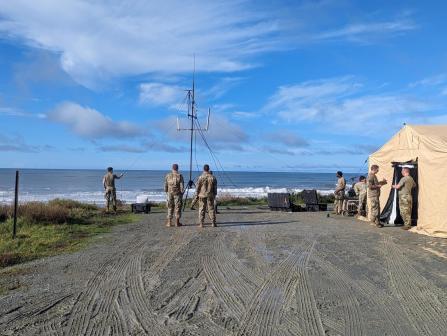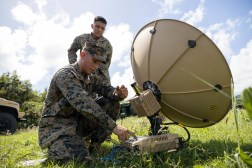OSD to host industry confab in search of high-tech solutions for ‘unleashing data’

The Office of the Secretary of Defense plans to gather a select group of innovators this spring to pitch technical solutions for moving, processing and transforming data into actionable information.
The special notice about the meeting, posted Jan. 19 on Sam.gov, comes as the Pentagon is pursuing a warfighting construct known as Combined Joint All-Domain Command and Control (CJADC2), which is aimed at connecting the U.S. military’s various sensors, data streams and weapon systems — and those of its international allies and partners — under a more unified network for faster and better decision-making.
The so-called Innovation Outreach Solutions Meeting, slated for April 15-16 in McLean, Virginia, will be hosted by OSD’s innovation and modernization office — which falls under the research and engineering directorate — in partnership with the Joint Staff’s intelligence directorate (J2) and the Army’s intelligence, surveillance and reconnaissance task force. Tech developers tapped to attend will conduct technical presentations and have a confab with Defense Department officials about their potential solutions for “unleashing data.”
“Information is central to all military functions. Rapid and reliable access to data is key to maintaining an enduring U.S. advantage in times of peace and crisis. As the network of data sources and decision-makers grows, as does the urgency to respond to emerging situations, so does the demand for the Department of Defense (DoD) to discover innovative solutions that enable the secure collection, storing, processing, monitoring, analyzing, and communicating of data at speed and scale,” the notice states.
The Pentagon is looking for tools that will ensure data is visible, accessible, understandable, linked, trustworthy, interoperable and secure, according to the needs statement.
Technologies of interest include solutions for transmitting and receiving data and signals over distances greater than current capabilities allow; connecting systems with data sources located “anywhere from the stratosphere to the seafloor”; multi-path networks for operating in environments with connectivity interference or degradation; boosting bandwidth at reduced power; edge computing; and “novel approaches” for transferring data, such as quantum or laser tech.
However, better methods for moving data aren’t enough. The department also needs tools for processing the vast amount of information it collects. That includes capabilities to “triage” inflows and prioritize the most critical and time-sensitive info; automate the tagging, cataloging and storing of data so it can be quickly found and accessed when needed; integrate “thousands of inputs” from disparate sources; and detect “anomalies” in cyber networks in real-time with machine learning technologies.
To help decision-makers understand and trust the data they’re being fed, the Pentagon wants information visualization tools, algorithms that can identify and provide automated alerts about items of interest, and enablers for “confidently ingesting data and information into existing AI/ML capabilities and training next-generation algorithms,” per the needs statement.
Applications to participate in the meeting are due Feb. 22.






